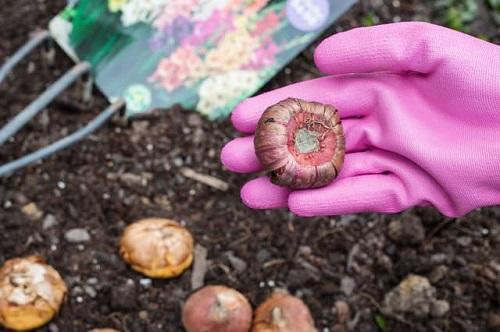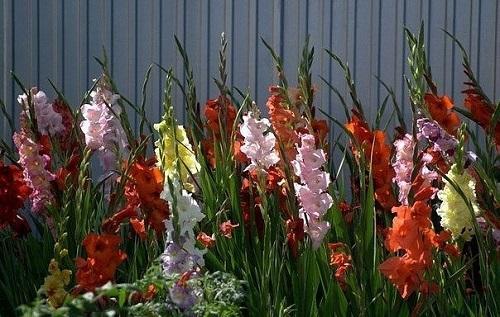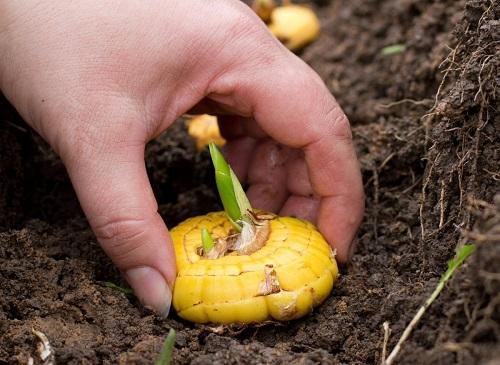Avoiding the fall of gladioli will help their correct fit.
 Fans of gladioli often face such a problem that these proud plants begin to fall and break during flowering. First of all, this affects the appearance of flowers, and they lose their decorative effect. In addition, during the fall, the tubers can be torn out of the soil and if an emergency situation is not noticed in time, the flower disappears without soil.
Fans of gladioli often face such a problem that these proud plants begin to fall and break during flowering. First of all, this affects the appearance of flowers, and they lose their decorative effect. In addition, during the fall, the tubers can be torn out of the soil and if an emergency situation is not noticed in time, the flower disappears without soil.
In order to prevent such a phenomenon in your flower beds, it is important to know how to plant gladioli so that they do not fall. This requires:
- choose a suitable place for gladioli on the site;
- plant tubers correctly;
- organize quality care for flowering plants.
Where is the best place to plant?
Gladioli are very light-loving plants, so for them landing it is necessary to take a well-lit place on the site. A flower planted in the shade will grow, but it will quickly stretch out and become frail. In this state, it can break even before the peduncle appears.
In addition, it is important to avoid areas that are not protected from the wind, because it is he who most often breaks gladioli.
A good option for plants would be a flower bed along the house on the south side - there is light and the wall will protect from the wind.
How to plant?
The corms of gladioli should be well fixed in the soil so that during flowering the plant can withstand not only its weight, but also a powerful peduncle. If a tuber lies on the surface of the soil, only lightly covered with earth, it will most likely be pulled out under the weight of the flower. Optimum planting depth for tall gladioli with strong peduncles is at least 20 cm, lower plants can be deepened by 15 cm. This will slightly slow down the emergence of seedlings, but will help the flower to take a "strong" position.
In order for the tuber to take root in the soil faster, it is recommended to germinate it first.
Features of care for blooming gladioli
During flowering, gladioli need abundant watering and feeding, this is the only way to grow a strong and healthy plant.
In addition, most growers practice creating an additional support for massive flowers. To do this, they are tied one at a time to sticks installed near the plants. If the flowers grow in a row, you can make a kind, group, protective structure: on both sides of the row, stick high sticks (2 on each side) into the ground and pull a rope between them along the flowers. Thus, gladioli will find themselves between two ropes that will support them and will not let them fall even in the wind. You can also stretch a coarse mesh on top.